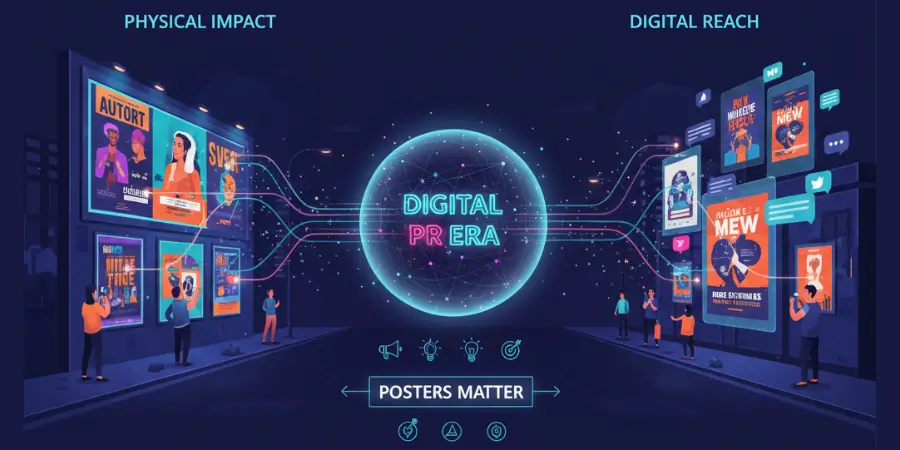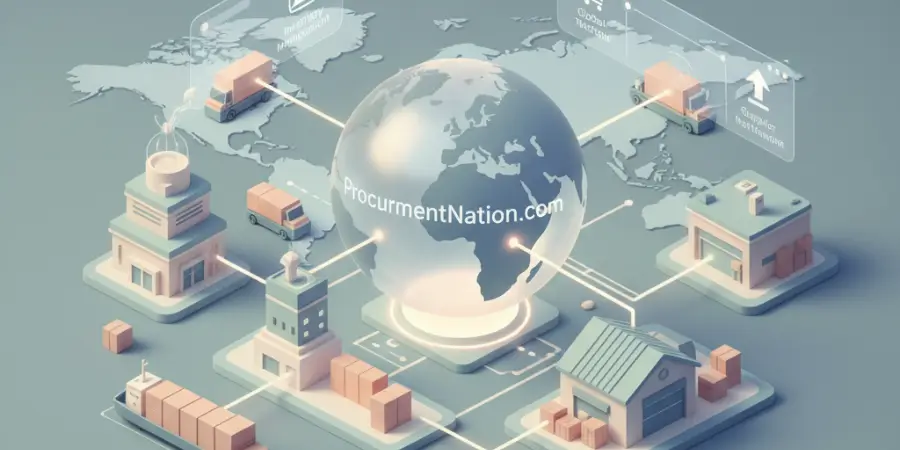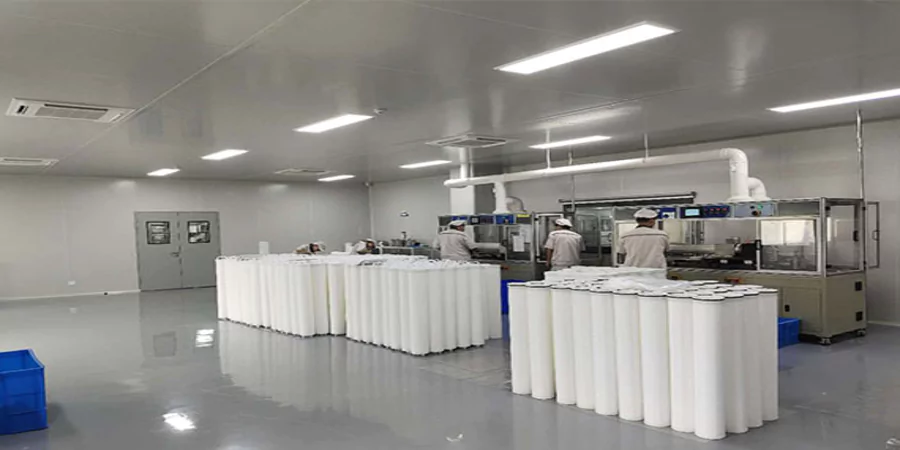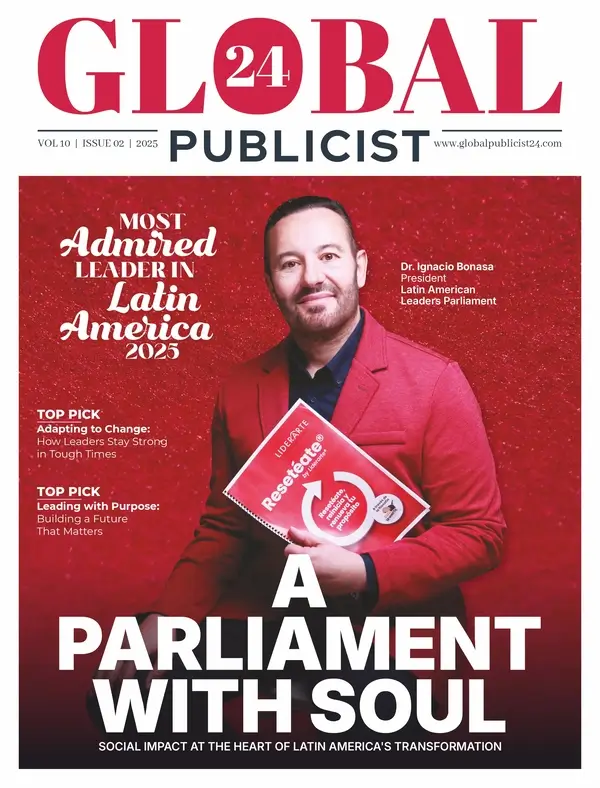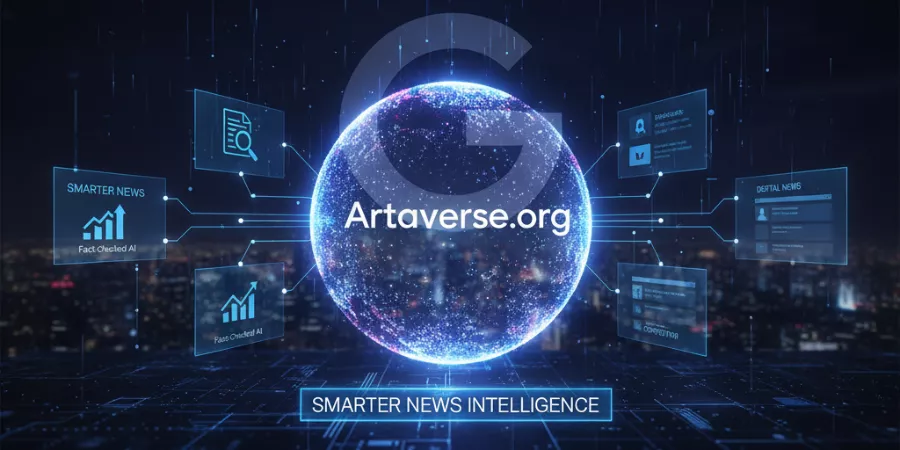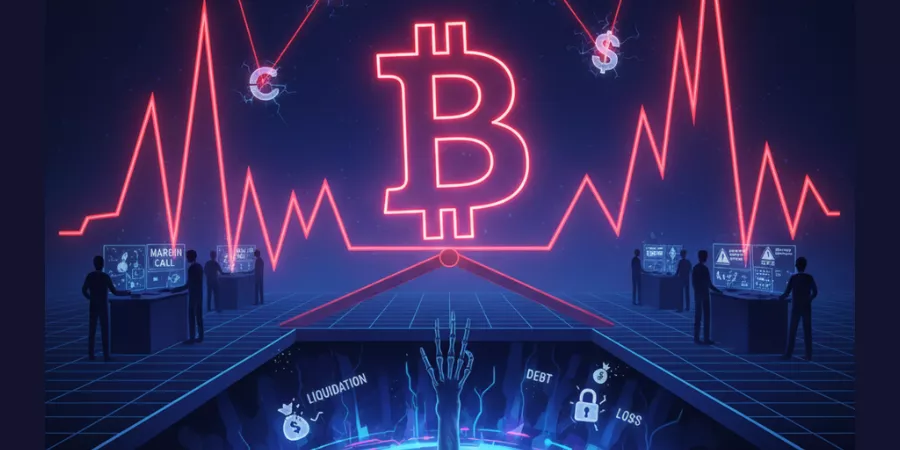Introduction: The Digital Fatigue Phenomenon
Every marketer feels it — the constant hum of digital overload. Social feeds scroll endlessly, inboxes overflow, and consumers swipe past ads in seconds. Amid all that noise, one format has quietly held its ground: the poster. It’s tangible. It’s visual. And it still works.
In today’s hyperconnected environment, posters might seem old-school, but their staying power tells a different story. They capture attention in ways digital screens can’t. They bring campaigns into the physical world — offering presence, locality, and sensory engagement that screens simply don’t replicate. As digital PR evolves, poster marketing is proving itself as a timeless complement, not a relic.
The Power of Physical: Why Tangibility Still Wins
Physical advertising connects through touch, sight, and place — the very elements missing from digital. According to the U.S. Postal Service Office of Inspector General, print ads create stronger brand impressions across all age groups than digital ones. Younger audiences process digital content faster, but they remember print better. That means posters still deliver powerful, lasting impact.
Sensory Engagement Matters
Think about it: posters occupy real space. They interrupt daily routes — subway stations, office corridors, coffee shop walls. That sensory presence creates a moment of pause. Consumers see and feel a message, rather than scrolling past it.
The tactile and spatial qualities of print spark different brain responses. When someone encounters a poster, they aren’t just looking — they’re perceiving. This physical interaction deepens emotional connection and recall.
Data Doesn’t Lie: Posters Drive Ad Recall
According to the Nielsen Poster Advertising Study 2017, 51% of adults noticed a poster advertisement within the past month, and 38% within the past week. More impressively, the average aided ad recall per campaign hit 47%. Campaigns with 40 or more posters saw recall soar to 69% — proof that visibility scales with reach.
These aren’t just passive glances. They’re interactions with real influence. In fact, the Out of Home Advertising Study – March 2023 revealed that 88% of U.S. adults had seen some form of out-of-home (OOH) advertising in the past 30 days, and 43% of those who noticed one visited a business within 30 minutes. Even better: 78% of them made a purchase.
Local Presence, Real Impact
Unlike digital ads that vanish into algorithms, posters live where people move. They create local recognition — the kind of exposure that fuels word-of-mouth. Whether announcing an event, promoting a brand, or driving awareness, poster campaigns help businesses own their neighborhoods.
In urban environments especially, visibility equals trust. Seeing a poster for a recurring brand reinforces its legitimacy. That’s the same psychological effect that makes consistent signage so valuable.
The Role of Design: Standing Out in a Visual World
Good design amplifies effectiveness. The Applied Sciences study by Radovan Madlenák et al. (2023) found that outdoor ad visibility — size, salience, and placement — strongly influences attention and recall. In simpler terms: bigger, bolder, and clearer posters get remembered.
Posters as Brand Statements
A well-designed poster is more than just promotion — it’s a brand ambassador. From typography to color, everything communicates tone and identity. When posters align visually with a brand’s digital presence, they create cohesion across platforms. This hybrid synergy reinforces recognition.
And production quality plays a role. Using professional custom poster printing services allows marketers to translate digital precision into physical impact. The texture, gloss, and vibrancy of a poster’s finish all influence perception — and, by extension, audience response.
Integration with Digital PR: The Hybrid Advantage
Digital PR thrives on storytelling and reach. Posters thrive on visibility and locality. Together, they form a potent mix.
QR Codes and Smart Design
One of the simplest integrations? QR codes. These small scannable bridges connect physical audiences to online destinations — websites, social channels, event registrations, or promotional videos. They merge the static and digital worlds with minimal friction.
Amplifying Online Campaigns
Consider a campaign that uses posters to tease a digital reveal. A QR code might lead to a launch video, influencer collaboration, or branded challenge. This synergy builds anticipation, drives engagement, and tracks offline-to-online conversion — data marketers can actually measure.
The Power of the Multi-Channel Strategy
Using posters within a wider campaign offers diversification. As digital ad fatigue grows, multi-channel touchpoints keep messages fresh. Posters introduce repetition without redundancy, hitting different attention windows. For PR professionals, that’s strategic gold.
Posters as Trust Builders
When consumers encounter a poster in their city or community, it signals investment. It says, “We’re here.” That local presence translates to authenticity — something digital ads can’t always replicate.
This credibility extends to professionals themselves. For example, marketers who understand tactile media also recognize the importance of physical brand tools — like business cards. Knowing why you need business cards is about more than contact info. It’s about legitimacy. The same logic applies to posters: physical proof of brand activity.
Print Advertising Trends: Enduring, Not Outdated
Far from fading, print is adapting. According to a 2022 Journal of Safety Research study, expanding outdoor advertising space by just 10% leads to measurable increases in consumer exposure. That finding aligns with what marketers see in practice: the more visible your message, the more it sticks.
However, the study also notes diminishing returns at saturation points — a valuable insight for campaign planning. Balance matters. Strategic placement beats blanket coverage.
The Psychological Edge: Memory and Emotion
Why do posters linger in memory? Because they anchor emotions in place. People often associate physical ads with environments — a concert poster on a café wall, a nonprofit campaign near a park. That context creates lasting recall.
Digital ads, by contrast, lack spatial memory. They appear and disappear. Posters, meanwhile, become part of the local story.
Emotional Resonance
A clever poster campaign doesn’t just promote — it resonates. The most effective ones use humor, color, or storytelling to form micro-moments of connection. Those fleeting emotions are what turn observers into participants.
Poster Marketing in the Age of Analytics
Some argue that digital’s biggest advantage is measurability. But that’s changing. Today, marketers can integrate location data, QR scans, and traffic mapping to analyze poster effectiveness in near real time. Combined with online tracking, this creates a feedback loop that strengthens both mediums.
Poster Campaign Optimization
By correlating ad placements with foot traffic or sales spikes, PR professionals can refine their strategies. Want higher recall? Add frequency. Want higher conversion? Use proximity to point-of-sale locations. Want cross-channel consistency? Match visual themes to digital creative.
It’s no longer intuition — it’s informed artistry.
The Education for PR Professionals: Relearning Physical Media
Digital marketers have mastered impressions, reach, and engagement. But physical media requires a different mindset — one rooted in geography, material, and emotion.
Posters don’t just sell; they narrate. They bring brand stories into the streets, the subway, the cafés where real audiences gather. That’s why training young PR teams in print strategy is valuable. It teaches how to blend creativity with locality.
Conclusion: Enduring Value in a Transient Age
In a world where attention flickers and screens blur together, posters remain steadfast. They don’t need algorithms to be seen. They don’t vanish when you scroll. They live, breathe, and remind.
Poster marketing isn’t nostalgia — it’s strategy. The data proves it, the design supports it, and the outcomes justify it. For PR professionals and marketers alike, it’s time to see posters not as the past, but as the perfect physical counterpart to digital storytelling.
Print isn’t dead. It’s alive — and it’s standing tall on every city street.

